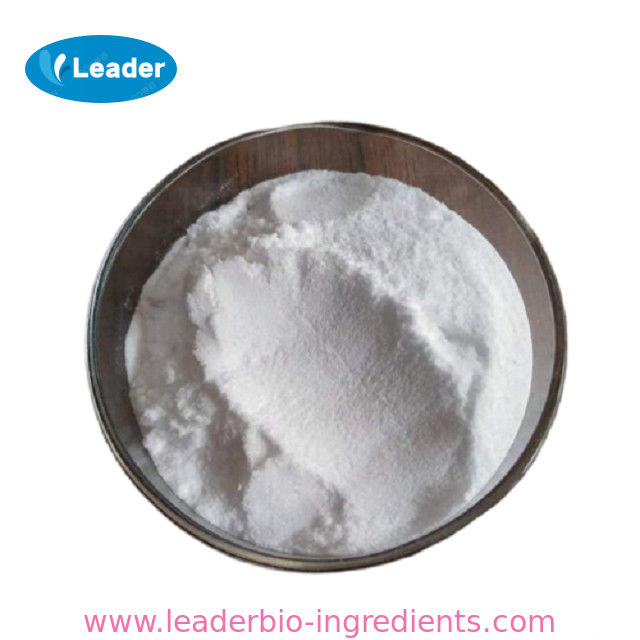| L-Hydroxyproline Basic information |
| |
| L-Hydroxyproline Chemical Properties |
| Melting point |
273 °C (dec.)(lit.) |
| alpha |
-75.5 º (c=5, H2O) |
| Boiling point |
242.42°C (rough estimate) |
| density |
1.3121 (rough estimate) |
| vapor density |
4.5 (vs air) |
| refractive index |
-75.5 ° (C=4, H2O) |
| storage temp. |
Store at RT. |
| solubility |
H2O: 50 mg/mL |
| form |
Crystals or Crystalline Powder |
| pka |
1.82, 9.66(at 25℃) |
| color |
White |
| PH |
5.5-6.5 (50g/l, H2O, 20℃) |
| Odor |
Odorless |
| optical activity |
[α]25/D 75.6°, c = 1 in H2O |
| Water Solubility |
357.8 g/L (20 º C) |
| Merck |
14,4840 |
| BRN |
471933 |
| InChIKey |
PMMYEEVYMWASQN-DMTCNVIQSA-N |
| CAS DataBase Reference |
51-35-4(CAS DataBase Reference) |
| NIST Chemistry Reference |
Hydroxyproline(51-35-4) |
| EPA Substance Registry System |
trans-4-Hydroxy-L-proline (51-35-4) |
| Hazard Codes |
Xi,Xn |
| Risk Statements |
36/37/38-22 |
| Safety Statements |
24/25-36/37/39-27-26 |
| WGK Germany |
3 |
| RTECS |
TW3586500 |
| Hazard Note |
Irritant |
| TSCA |
Yes |
| HazardClass |
IRRITANT |
| HS Code |
29339990 |
| |
| L-Hydroxyproline Usage And Synthesis |
| Description |
A non-essential amino acid. Can be isolated from gelatin. Hydroxyproline has not been reported as added to food in any of the NAS surveys. |
| Chemical Properties |
White crystalline powder |
| Uses |
A natural constituent of animal structural proteins such as collagen and elastin. Several microorganisms producing proline trans-4- and cis-3-hydroxylase were discovered and these enzymes were applied to the industrial production of trans-4- and cis-3-hydroxy-L-proline. |
| Uses |
A versatile reagent for the synthesis of neuroexcitatory kainoids and antifungal echinocandins. |
| Uses |
hydroxyproline is a skin-conditioning amino acid. It is a component of collagen. |
| Production Methods |
In the past L-Hydroxyproline was isolated by hydrolysis of animal collagen, e. g. gelatine or collagen, of which it is a major constituent. L-Hydroxyproline is an unnatural amino acid which is made in the body by hydroxylation of L-Proline. The presence of L-Hydroxyproline and proline are key to maintaining the stability of the tight collagen helix.
Today L-Hydroxyproline is manufactured by bio-catalysed hydroxylation of proline in bacteria. Togr with its other isomers, L-Hydroxyproline is also used as an inter mediate for a range of pharmaceutical active ingredients.
Produced by hydroxylation of L-proline after protein synthesis. It is contained rich in collagen and elastin. Known to stabilization of triple-helix structure of collagen. Widely used as an intermediate for medicines. |
| Definition |
ChEBI: An optically active form of 4-hydroxyproline having L-trans-configuration. |
| Purification Methods |
Crystallise it from MeOH/EtOH (1:1). Separation from normal allo-isomer can be achieved by crystallisation of the copper salts [see Levine Biochemical Preparations 8 114 1961]. Separation from proline is achieved via the crystalline picrate, CdCl2, or acid ammonium rhodanate salts [see Greenstein & Winitz The Chemistry of the Amino Acids J. Wiley, Vol 3 p 2182 1961, Kapfhammer & Mohn Z Physiol Chem 306 76 1956]. [Beilstein 22/5 V 7.] |
| |
| L-Hydroxyproline Preparation Products And Raw materials |
|




